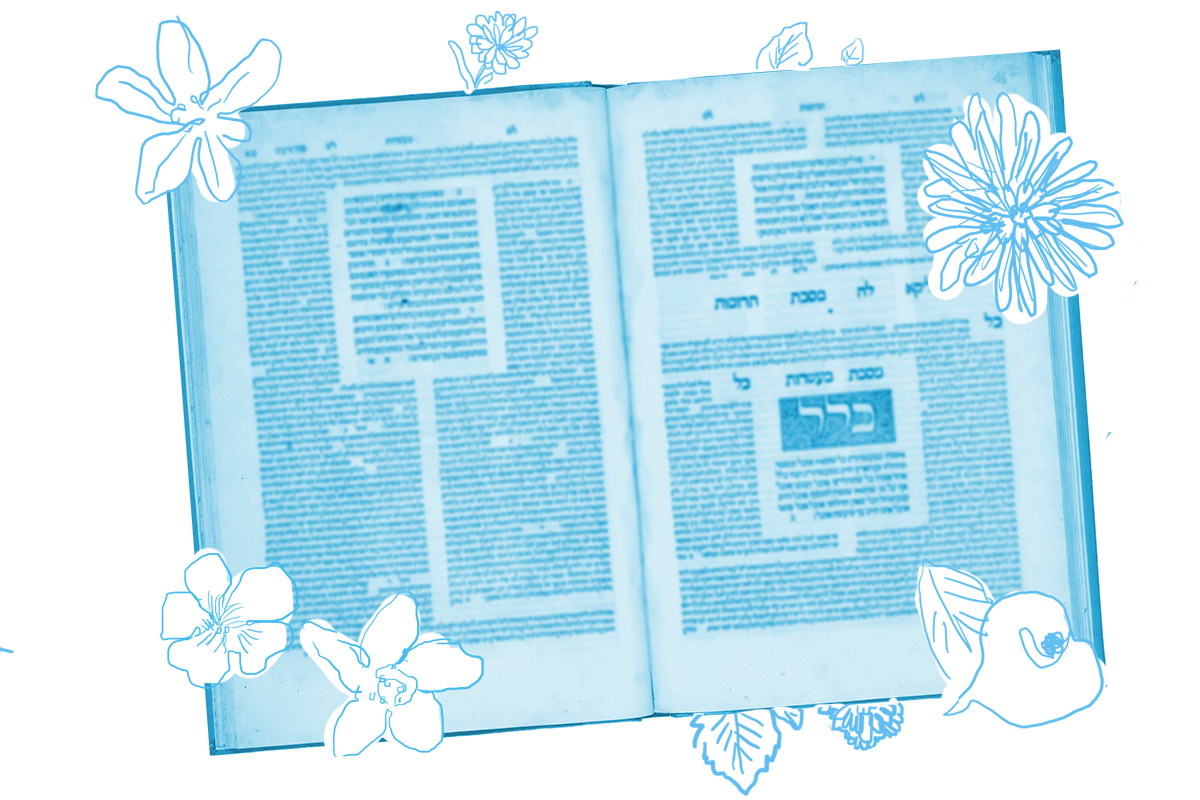As we’ll see more clearly in future tractates, women have limited property rights in the rabbinic legal system. Most of the time, their father or husband have partial or complete control over what they own, produce or inherit. Not so for a yevama, since she is no longer part of her husband’s household but not yet part of her brother-in-law’s.
A mishnah on today’s daf teaches this:
A widow waiting for her yavam (to consummate a levirate marriage or perform halitzah) to whom property was bequeathed: Beit Shammai and Beit Hillel agree that she may sell or give it away and her transactions are valid.
In a case where a yevama inherits property after the death of her husband but before she marries her brother-in-law, Beit Hillel and Beit Shammai grant her full ownership — the property is hers and she can transfer ownership to another.

Help us keep Jewish knowledge accessible to millions of people around the world.
Your donation to My Jewish Learning fuels endless journeys of Jewish discovery. With your help, My Jewish Learning can continue to provide nonstop opportunities for learning, connection and growth.
The mishnah then brings a second case that explores what happens to the woman’s property if she dies before her levirate marriage is consummated. On this matter Beit Hillel and Beit Shammai do not agree:
Beit Shammai say: The husband’s heirs should divide up the property together with her father’s heirs. And Beit Hillel say: The property retains its previous status. Money assured to her by her marriage contract remains in the possession of her husband’s heirs. Property that enters and leaves the marriage with her remains in the possession of her father’s heirs.
The discussion in the Gemara makes clear that Beit Shammai agrees with Beit Hillel that the property due to her in her marriage contract remains with the husband’s household. Where they disagree is about the property that she brings in and out of the marriage. Beit Hillel states that this property returns to her father’s household; Beit Shammai rules that it should be split between her father’s heirs and her husband’s heirs, which in this case is the yavam who inherits his deceased brother’s property, as we learned on Yevamot 24.
In exploring this disagreement, the Gemara highlights an apparent inconsistency in Beit Shammai’s position: In the first case, the woman has financial independence from her yavam. We know this because she is able to transfer all the property that she inherits. If the yavam had a claim to some of it, she would not be able to do so without his permission.
But in case two, Beit Shammai awards some of the property to the yavam, suggesting that he does have a claim over her property. So how can Beit Shammai claim that the yavam has a claim to her property in case two but not in case one? The Gemara brings a number of possibilities. Let’s take a quick look at two of them:
One suggests that in case one the woman was only engaged to her husband when he died, but in case two she had already married to him. Shammai is following his established position that while engaged, a woman’s fiance does not have a claim to the property she inherits, although after they are wed, he does. While this explanation accounts for Shammai’s position, it has an obvious downside: The mishnah makes no mention of the fact that the woman’s status has changed between the cases.
A second explanation hinges on the uncertainty of the levirate bond. In case one, the woman has a definite claim to the property (since it was bequeathed to her) while her yavam has an uncertain one (because they are not married yet). In that case, her definite claim trumps his uncertain one. Once she dies, however, her claim also becomes uncertain because she is not around to collect the property and she dies in a state of limbo. Because there are now two uncertain claims to the property, neither has an advantage and it is divided evenly between her heirs and those of her husband.
The mishnah does not seem to be concerned (or even aware) that Shammai’s position may be problematic. It’s the Gemara that scrutinizes the text for logical coherence. Yet after reading the Gemara, it’s hard to go back to the mishnah and not see the seams that it brings to light. This is one of the ways the Gemara shapes how we understand the Mishnah and why it can be difficult to separate the study of one from the other.
Read all of Yevamot 38 on Sefaria.
This piece originally appeared in a My Jewish Learning Daf Yomi email newsletter sent on April 14th, 2022. If you are interested in receiving the newsletter, sign up here.



